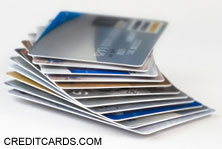 |
 |
 |
 |
 |
 |
 |
 |
Merchant Account TypesMerchant Account ProvidersNews & AdviceMerchant Account Tools |
 Print Print  Email Email 6 tips for keeping merchant account rates and fees lowFor some business owners, fears of seeing their companies' profits swallowed up by fees and extra charges is enough to keep them from accepting credit cards. But a cautious approach to getting a merchant account -- an arrangement with a bank or other provider that will allow your business to accept credit cards -- and a little homework now can help keep those fears from becoming a reality. 
Tip No. 1: Compare, compare, compare
Tip No. 2: Understand the interest
rates that apply to your business Sometimes, the opposite holds true. Typically, the advertised rates are for "qualified" purchases, says Godofsky. These are the transactions that merchant account providers consider to have the lowest risk. The purchases have to meet detailed criteria. For instance, they usually must be made on a personal Visa or MasterCard that was issued in this country, swiped rather than entered by hand and settled in a timely way, says Godofsky. If a purchase fails to meet even a single requirement, you'll pay a higher surcharge for the transaction to be processed. Because the provider will consider the purchase to be riskier, it will apply higher "mid-qualified" or "non-qualified" rates, each of which has its own complicated list of criteria, Godofsky says. You may be surprised at the reasons a purchase may not qualify for the best rate. For instance, if a customer makes a purchase on a corporate card or one that belongs to a rewards program that offers "points" for purchases, you'll often pay more. If you are an Internet merchant who can't swipe purchases in a terminal, the same holds true. And if the software in your terminal falls out of date and prevents you from using the latest security technologies, a higher rate will apply. Result: If a lot of your customers' credit-card purchases fall into the lower-rated categories, a great "qualified" rate won't help you much. One exception to the rule is American Express. It charges merchants the same rate for all purchases on its charge cards, says Godofsky. And contrary to what you may have heard, accepting its cards won't necessarily cost you more than other types. "It's a myth that they are typically more expensive," he says. With any account, ask for paperwork detailing the rates for each type of transaction, and how each category is defined, Godofsky suggests. Then do the math to make sure the fees that will apply to you most often are the most attractive, he says. "You need to consider your sales volume and your average ticket," he says. You can probably expect to pay in the 3 to 3.5 percent range on most purchases, he says.
Tip No. 3: Understand how customer
returns are handled
Tip No. 4: Consider how often the
bank will deduct charges
Tip No. 5: Evaluate recurring fees Some companies will also require businesses to pay an annual fee and a "startup fee" to cover the salesperson's commission. Hohnstein recommends that you make sure you find out, so there are no surprises later.
Tip No. 6: Consider the cost of breaking
contracts As an alternative, you may want to try a bank that requires a processing agreement but not a contract, Hohnstein says. "They will charge you a little higher discount rate," she says. Given that you've never accepted credit cards before, keeping your options open may be worthwhile. Published: May 1,2024Comments or Questions, Library of Stories
|
|||||||||||||